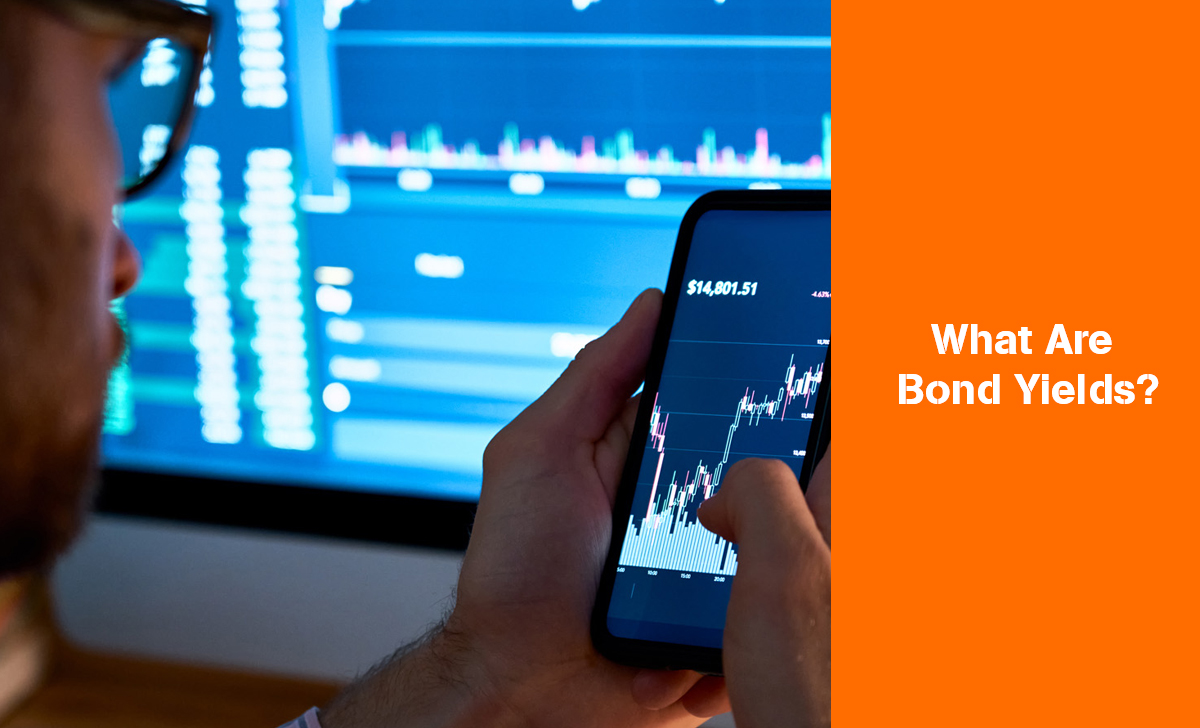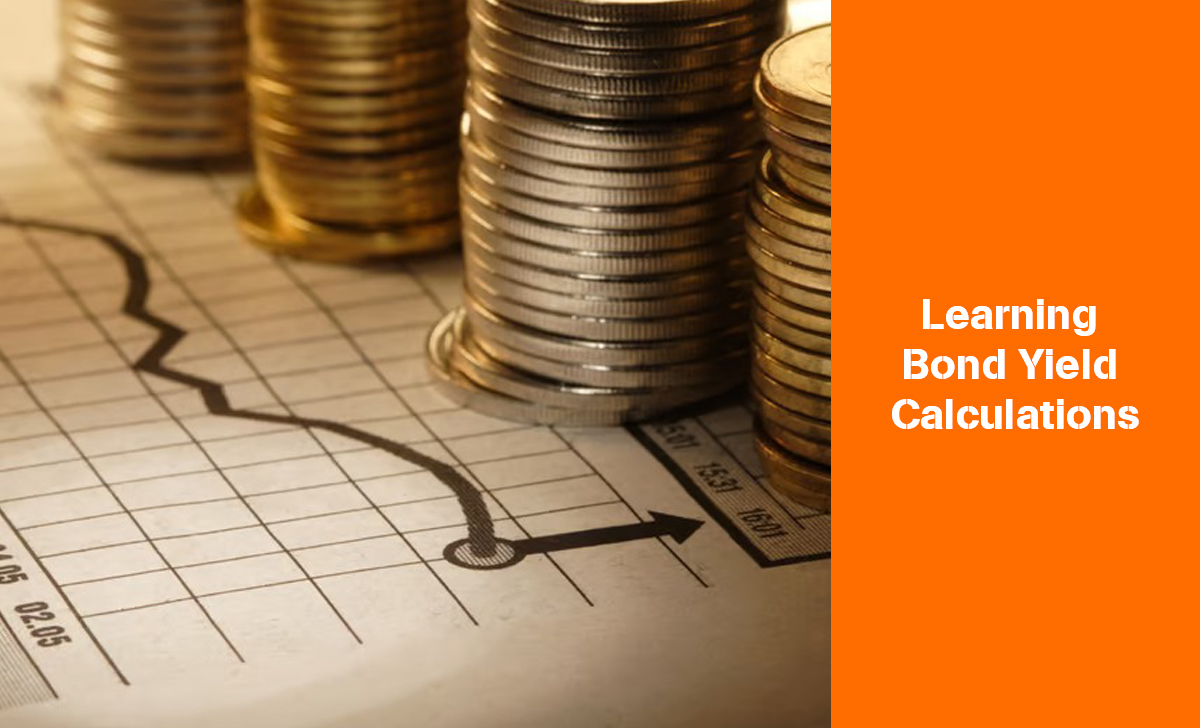Bond Yield is essentially the return an investor expects to earn from a bond. It is the percentage of interest income a bond holder receives relative to the bond price.
In this article, AZcoin will dissect the concept of bond yields, explore their importance in the financial landscape, and explain the calculations behind them.
What Are Bond Yields?

Bond Yields represent the annual return an investor can anticipate receiving from a bond, articulated as a percentage of the bond’s face value. Essentially, it is the interest earned on the investment. There are multiple types of bond yields, each offering diverse perspectives regarding an investor’s potential returns.
Current Yield
The current yield is a simple measure of a bond’s return, calculated by dividing the annual coupon payment by the bond’s current market price. This quick calculation helps investors estimate their expected return.
However, it doesn’t account for capital gains or losses from price changes over time, so it offers only a partial view compared to more complex yield metrics.
Yield to Maturity (YTM)
Yield to maturity (YTM) is a comprehensive measure of a bond’s return, considering annual interest payments, current market price, face value, and the time left until maturity. It represents the total return an investor can expect if they hold the bond until it matures.
Calculating YTM involves equating the present value of all future cash flows (coupon payments and principal repayment) to the bond’s current market price. This detailed calculation provides investors with a deeper understanding of potential returns, making YTM a crucial metric for informed decision-making.
Yield to Call (YTC)
Callable bonds allow issuers to repurchase them before maturity, typically when market conditions are favorable. Yield to Call (YTC) measures the return an investor would get if the bond is called early.
For investors, understanding YTC is essential, as it helps gauge potential returns. Callable bonds usually offer higher yields to offset the risk of being called early, which can limit gains.
Yield to Worst (YTW)
Yield to worst measures, the lowest possible return an investor might receive on callable or puttable bonds, considering worst-case scenarios like early redemption. This metric helps investors understand the downside risks of their bonds, especially in volatile markets.
By analyzing different bond yields, investors can better assess potential returns and navigate the complexities of the bond market.
The Importance of Bond Yields: Why Do They Matter?

Investment Decisions
When bond yields are high, investment opportunities are often more attractive as investors seek higher yields and evaluate the risks and rewards of different bonds. For bond investors, understanding yields is critical to making effective investment decisions.
Conversely, is it low may indicate riskier investments. Investors should do their due diligence when considering low-yield options, ensuring they understand the reasons for the drop in yields and whether the investment fits their risk appetite and financial goals.
Market Sentiment
Bond yields often reflect overall market sentiment. When interest rates rise, it is often a sign of optimism and economic growth, prompting investors to seek higher yields.
Conversely, when interest rates fall, it can indicate increased caution and concern about the economic outlook. Analyzing bond yield trends helps to understand current market conditions and helps investors develop appropriate strategies.
Inflation Hedging
In times of rising inflation, bond yields become crucial as investors try to protect their purchasing power. If inflation exceeds, the real return on investments decreases, reducing wealth over time. To counter this, investors often seek bonds with higher yields.
Understanding the relationship between bond yields and inflation helps investors protect their portfolios from losing purchasing power and improve financial resilience.
Interest Rate Sensitivity
Bond yields exhibit sensitivity to changing interest rates. When interest rates rise, previously issued bonds become less attractive compared to newly issued bonds with higher yields, causing the market price of existing bonds to fall. This inverse relationship means that investors must remain cognizant of interest rate fluctuations, as they can significantly impact bond yields.
Conversely, falling interest rates typically lead to rising bond prices and lower yields. Staying attuned to interest rate movements allows investors to adjust their strategies accordingly, optimizing their bond holdings for maximum returns.
Besides, if you want to learn more, we suggest you check out other interesting content like: European Central Bank, Michael Saylor or FED
Learning Bond Yield Calculations

While the calculations surrounding bond yields may initially appear daunting, breaking them down into manageable components simplifies the process. Here, we will explore how to calculate two key types of bond yields: current yield and yield to maturity (YTM).
Current Yield Calculation
The current yield serves as a straightforward indicator of a bond’s return. To calculate the current yield, use the following formula:
Current Yield = (Annual Coupon Payment / Current Market Price) x 100.
For instance, consider a bond with a face value of $1,000 that has a coupon rate of 5%. If this bond is currently trading at $950, the calculation would be:
Current Yield = (50 / 950) x 100 = 5.26%.
Yield to Maturity (YTM) Calculation
Calculating yield to maturity (YTM) is more intricate, involving several variables. Understanding the underlying concepts remains crucial for investors looking to evaluate bond investments accurately.
- To approximate YTM, begin by determining the future cash flows, which include periodic coupon payments and the principal repayment at maturity.
- Once the cash flows are established, discount each future cash flow to its present value using an expected rate of return as the discount rate.
- Afterward, sum the present values of all cash flows and solve for the discount rate (YTM) that balances the total present value with the bond’s current market price.
Factors Affecting Bond Yields

Numerous factors contribute to fluctuations in bond yields, underscoring the dynamic nature of the bond market:
- Interest rates are the most important factor affecting bond yields. When interest rates rise, existing bonds become less attractive because of their lower yields, causing prices to fall and yields to rise. Conversely, when interest rates fall, bond prices rise and yields fall.
- Credit risk significantly affects bond yields. Bonds from lower-rated entities generally offer higher yields to offset default risk, while higher-rated bonds provide lower yields due to their reduced risk.
- Inflation has a major impact on bond yields. As inflation increases, the purchasing power of future payments decreases, causing investors to demand higher yields to compensate. This highlights the need to monitor economic indicators when evaluating bond investments.
- The supply and demand for bonds affect their yields. When demand exceeds supply, bond prices go up and yields go down. When supply exceeds demand, prices fall and yields rise.
- Maturity affects bond yields, bonds with longer maturities typically have higher yields than bonds with shorter maturities. This premium compensates investors for the additional risks of holding bonds for the long term.
Conclusion
Bond Yields encapsulate a crucial aspect of fixed-income investing, providing insights into potential returns and the risks associated with various bond investments. Whether you are a seasoned investor or a newcomer exploring the possibilities of bond investments, grasping the allure of bond yields will ultimately equip you to make sound financial decisions.
So above we have helped you find information about The Bond Yields. Hopefully, the above content will be somewhat useful to you. If you need to learn more content, follow AZcoin right away!

I am Tony Vu, living in California, USA. I am currently the co-founder of AZCoin company, with many years of experience in the cryptocurrency market, I hope to bring you useful information and knowledge about virtual currency investment.
Email: [email protected]











